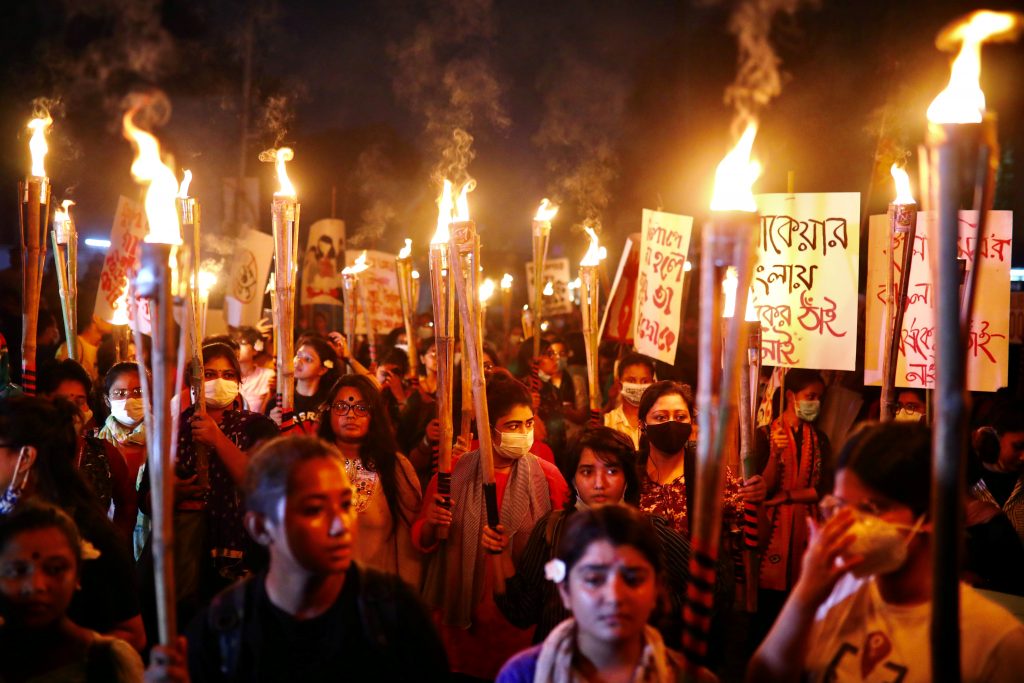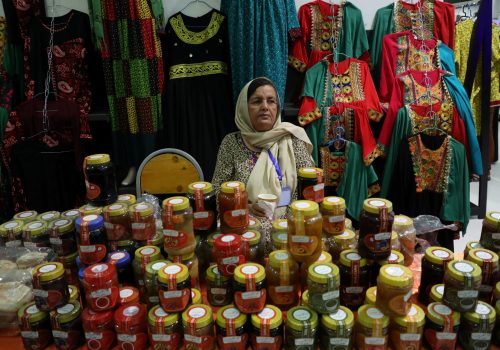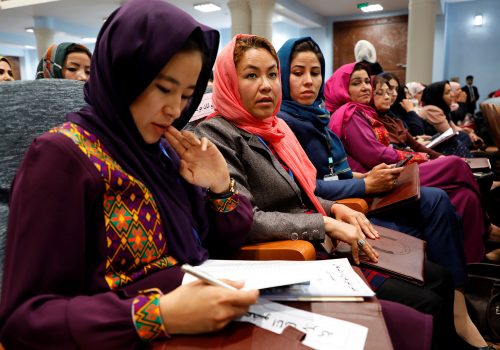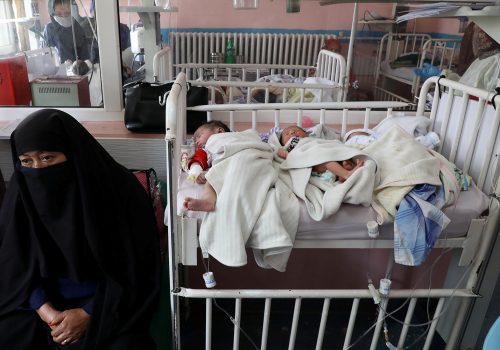The January 2021 rape and murder of a high school student in Bangladesh left the nation in shock yet again. However, this is not an isolated occurrence. Countless examples of gender-based violence (GBV) in South Asia from last year raise significant concerns about the so-called “progress” made in improving women’s standing and fighting rape culture in the region. Political discourse in India, Pakistan, and Bangladesh is deeply misguided regarding such issues, often leading to systematic victim-blaming which—knowingly or unknowingly—helps the perpetrators. In this piece, we examine the true depth and commonality of GBV in India, Bangladesh, and Pakistan—as well as review previous steps taken to address this issue. We then suggest policy recommendations to curtail GBV and shift societal norms away from the normalization of rape culture and the objectification of women in South Asia. While, on the surface, one may notice an increased promotion of gender empowerment in the region, we point out that a deeper analysis of the ground realities in these countries reflects an appallingly different story.
Taking stock of previous legal steps and actions taken to fight GBV and rape culture
On the surface, one could argue that steps have been taken towards changing laws related to the protection of women after societal demands were made to address the cross-cutting issues of GBV and rape culture. In 2012, the Nirbhaya rape case in India sparked an unprecedented public outcry; digital forums were flooded with horrific details of the crime, galvanizing people to occupy streets and public spaces in protest for crimes against women. Public pressure in India was also monumental in leading to a harsher anti-rape Criminal Law in 2013 following the protests. The advent of the #MeToo movement also propelled female lawyers in multiple South Asian countries to establish mediums that would provide quick and secure assistance to survivors. This includes counseling services and access to lawyers who work specifically on women’s issues. In the summer of 2020, the Black Lives Matter protests in the United States prompted conversations on the subjugation of low-caste Hindu Dalits and police brutality in India, with many civil rights activists adopting “Dalit Lives Matter” as a slogan to highlight parallel oppressive structures and rally against the age-old suppression of Dalits in India. These protests directly challenged themes of casteism in addition to crimes against women and, at first glance, seem to have led to meaningful reform.
Across the border in Pakistan, there was national uproar against the victim-blaming comments of Lahore’s top police official regarding the gang-rape of a mother in front of her two young children. This was a welcome departure from the usual response to similar incidents of violence against women. Only eighteen years previously, Mukhtaran Mai made international headlines after she was gang-raped in 2002 as “penance” for her brother’s alleged adultery. However, her quest for justice was met with mass opprobrium. The recent Pakistani #MeToo movement, which has involved increasingly vociferous and controversial women’s rights marches being held on International Women’s Day every year, has even adopted the feminist slogan of “my body, my choice” in response to issues such as marital rape. These slogans have caused nationwide debates on mainstream platforms, both on the streets and primetime television.
Meanwhile, though Bangladesh boasts significant progress in gender parity—such as the relatively high female workforce participation in comparison to its neighbors India and Pakistan–the country too faces major issues concerning violent crimes against women. After the Noakhali gang-rape last year, when activists pointed out statistics that 975 rape cases against women were recorded during the first nine months of 2020 alone and anti-rape protests occurred across the country, officials were quick to adopt the death penalty as punishment.
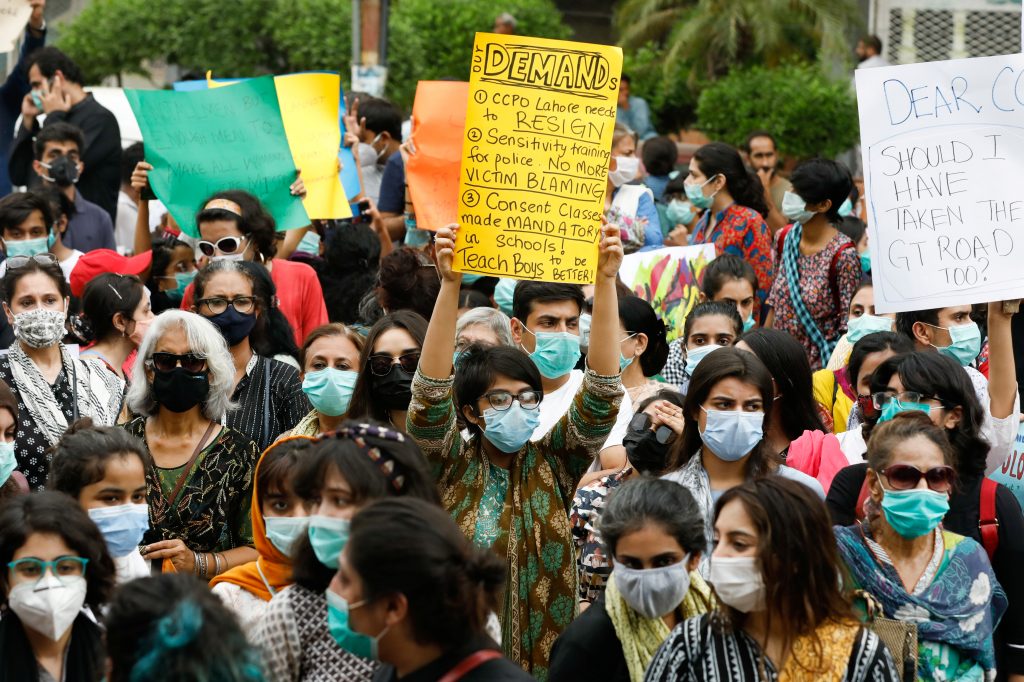
It is crucial to understand the context in which we analyze crimes against women throughout South Asia; movements have indeed emerged and led to reform. However, serious issues remain, and societal trends that feed them cross social, economic, religious, ethnic, and political lines.
Visible trends in cases of violence against women
Many visible trends in the region perpetuate an environment of sexual violence against women and other vulnerable sections of society:
1) Definition of rape: The definition is largely based on a one hundred and fifty year old colonial definition. In the case of Bangladesh, the definition narrowly covers penile penetration to women without informed and willful consent. This definition leaves out cases of sexual abuse of both young boys and girls, such as in some Islamic seminaries. While India’s 2012 protests prompted changes to the age-old definition of rape to include harassment, stalking, and acid attacks, the implementation of measures against perpetrators has been weak and leaves out cases of marital rape. Though in Pakistan marital rape was criminalized in 2006, this is not the case in Bangladesh and India. Opposition to changes in law has been heard from several high quarters including comments by a former Indian Chief Justice who said that criminalizing marital rape will lead to “…anarchy in families and our country is sustaining itself because of the family platform which upholds family values.”
2) Stigma surrounding rape: The stigmatization of rape victims is a major reason for the underreporting of such cases of GBV. Victims of rape are too afraid to speak up as they believe that not only that they will not get justice but also fear facing lifelong humiliation by their families, communities, and law enforcement. Such stigma is based on intense institutional sexism and patriarchy, where the conception of honor is attached to women’s bodies. This likely inspired the Noakhali gang-rape perpetrators to audaciously release a video of the incident on social media.
3) Widespread victim-blaming along with hollow promises of justice by governments: Victim-blaming for rape cases is widespread in South Asia, percolating all the way up to prominent figures in media and pop culture. Ananta Jalil, a popular Bangladeshi actor, commented that the “dress choice of women” is responsible for inviting “unwanted sexual advances.” At the same time, the country’s information minister blamed pornography for rising rape cases. Moreover, while high-level officials occasionally make strong statements condemning rapes—such as when Pakistani Prime Minister Imran Khan called for the punishment of perpetrators by castration and hanging as a deterrent, or when the Bangladeshi government adopted the death penalty for rape–critics in Bangladesh responded to the latter by arguing that such measures will not work and are merely a “cop-out” by the government to avoid addressing systematic causes of GBV and rape culture. Nevertheless, activists have argued that death penalty punishments in recent high profile cases have done little to alter rape statistics. Studies regarding rape in India show that there is no correlation between the introduction of capital punishment and reduced incidences of rape. The combination of these factors only feeds the narrative that rape victims are to be blamed for violence committed against them, and that justice mechanisms often are more cosmetic than effective.
4) Involvement of law enforcement officials and powerful groups: Last year’s Hathras gang-rape case in India saw perpetrators with political influence enjoy absolute impunity as they utilized the very institutions established to ensure justice for victims instead be used against them. The victim was a Dalit—from the “lowest” rungs of the Hindu caste hierarchy—while the culprits were from the “highest” caste, or the Brahmin community. The elected officials of Uttar Pradesh sided with the perpetrators likely because they electorally rely on the vote-bank of upper-caste Hindus, thus reinforcing the ways in which caste operates to further marginalize and brutalize Dalit women. Additionally, the police officers involved in the case demonstrated gross insensitivity not only by failing to support the victim and her family—such as by blatantly disregarding the complaint that was lodged—but they then proceeded to burn the victim’s body in gasoline after her death in order to avoid what they claim could have culminated in “caste riots.” This hurried cremation was likely an attempt to destroy forensic evidence that would make the case stronger against the rapists. Therefore, through the Hathras case, we can see a clear example of how law enforcement officials and political actors can and do shield and embolden perpetrators.
5) Role of mass media: South Asian filmmakers, such as those in the massively popular Indian film industry Bollywood, should also be held accountable. Their content is consumed across South Asia and thus carries significant influence when it comes to setting societal and cultural norms related to women and gender. Much of the content produced in Bollywood espouses patriarchal narratives where the plot lines regressively demonstrate women as having no agency in sexual or interpersonal relationships. They also normalize the hyper objectification of women by inserting commercially-viable “item songs,” used in between a film’s plot lines that portray women as lustful objects catered to the male gaze.
Policy recommendations
1) Education about rape as a violent crime: Educational curriculum needs to heavily instill gender sensibilities from an early age. In Bangladesh, certain rights groups are pushing for effective sex education as part of the national school curriculum. In India, there have been talks since the early part of the last decade—such as those by Dr. Jacqueline Bhabha of the Harvard School of Public Health—to discuss gender and gender norms with children in schools, including teaching them how to interact with members of the opposite gender. De-socializing rape culture must begin at the earliest age while children are developing attitudes and habits toward others in society.
2) “Evolution” and amendment in the legal definition of rape: Civil society activists across all three countries should form a petition to change the legal definition of rape. Such a petition by transgender victims was heard by the Supreme Court of India in October 2020 where it was suggested that the definition of rape should include any kind of forced sexual acts with another person, thus reflecting a gender–neutral definition of rape or sexual assault. This definition should also include people of the same-sex and transgender individuals as well as marital rape.
3) Building witness protection systems: Witness protection policies ensure that a person is protected from intimidation when pursuing and fighting cases of GBV. A witness protection law in Bangladesh was drafted almost fifteen years ago but has yet to be implemented. Such laws should be replicated and implemented in India and Pakistan as well as finally pushed through in Bangladesh. Adding these frameworks will protect women who are vulnerable to reprisals from the accused rapist(s) and supporters.
4) Creation of “safe spaces” online for women: A few years back, an Oxford-trained lawyer created a website dedicated to recording experiences of sexual harassment and molestation in India. Such initiatives should be set up across India, Pakistan, and Bangladesh so that women feel at ease sharing their accounts in an anonymous setting while receiving moral support and empathy from fellow survivors. New initiatives can also offer pro bono legal counsel, mental health, and trauma resources, based on organizations present in Western countries.
5) Reevaluation of priorities of Censorship Institutions: India has a powerful censorship board that holds the authority to censor content deemed anti-women or promoting misogynist views in films. Yet, its priorities in the past have focused on censoring sexually explicit scenes while being completely tacit with scenes that objectify female bodies. If creative freedom is an issue, anti-women scenes in movies should at the very least include statutory warnings.
6) International and corporate funding for “women empowerment” projects: Similar to a short film called “Devi,” which drew serious attention last year in India as it showed how victims of rape and sexual assault can belong to any age group and social standing, bigger projects along these lines should be financed by corporate houses with the intention of not only entertaining the masses but also disseminating a broader message of women empowerment and against GBV. Although in recent times, Bollywood has had a history of making women-oriented films depicting the autonomy of women, these efforts have been outweighed with big budget films that normalize GBV and patriarchy.
Conclusion
The weaponizing of women’s bodies has always been part of the fabric of South Asia, with mass rapes in 1947 and 1971 being integral to the birth of the three most populous countries in the region. Women’s bodies became a battlefield for national honor, and the shame continues to be laid on the door of the victim while perpetrators face no repercussions. As such, while it appears that—across South Asia—digital medium has mobilized many people regarding GBV and rape culture, this is simply the first step. In India, Pakistan, and Bangladesh, similar trends of Gender Based Violence are widespread, and structural reforms need to be implemented to protect women and shift societal and legal norms regarding gender and violence.
Dr. Rudabeh Shahid is a non-resident senior fellow at the Atlantic Council’s South Asia Center.
Kaveri Sarkar is a project assistant at the Atlantic Council’s South Asia Center.
Azeem Khan was an intern at the Atlantic Council’s South Asia Center.

The South Asia Center is the hub for the Atlantic Council’s analysis of the political, social, geographical, and cultural diversity of the region. At the intersection of South Asia and its geopolitics, SAC cultivates dialogue to shape policy and forge ties between the region and the global community.
Related Content
Image: Female activists and students take part in a torch procession demanding women's safety and justice for rape victims, amid the coronavirus disease (COVID-19) outbreak in Dhaka, Bangladesh, October 14, 2020. REUTERS/Mohammad Ponir Hossain TPX IMAGES OF THE DAY
